- News
- Reviews
- Bikes
- Accessories
- Accessories - misc
- Computer mounts
- Bags
- Bar ends
- Bike bags & cases
- Bottle cages
- Bottles
- Cameras
- Car racks
- Child seats
- Computers
- Glasses
- GPS units
- Helmets
- Lights - front
- Lights - rear
- Lights - sets
- Locks
- Mirrors
- Mudguards
- Racks
- Pumps & CO2 inflators
- Puncture kits
- Reflectives
- Smart watches
- Stands and racks
- Trailers
- Clothing
- Components
- Bar tape & grips
- Bottom brackets
- Brake & gear cables
- Brake & STI levers
- Brake pads & spares
- Brakes
- Cassettes & freewheels
- Chains
- Chainsets & chainrings
- Derailleurs - front
- Derailleurs - rear
- Forks
- Gear levers & shifters
- Groupsets
- Handlebars & extensions
- Headsets
- Hubs
- Inner tubes
- Pedals
- Quick releases & skewers
- Saddles
- Seatposts
- Stems
- Wheels
- Tyres
- Health, fitness and nutrition
- Tools and workshop
- Miscellaneous
- Tubeless valves
- Buyers Guides
- Features
- Forum
- Recommends
- Podcast
review
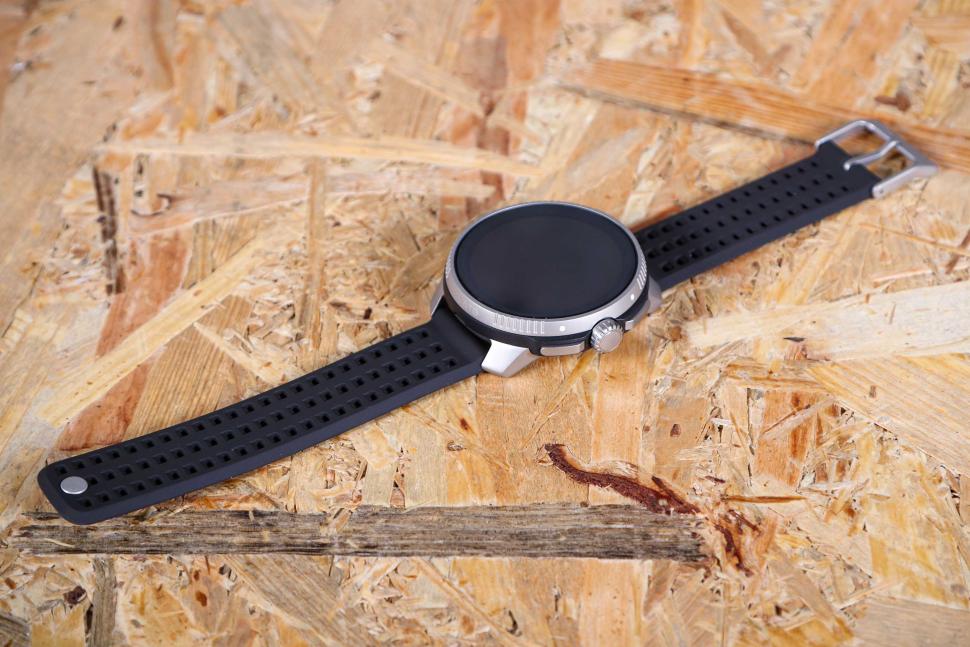 Suunto Race
Suunto Race£389.00
VERDICT:
Good watch for a multi-sport athlete and priced to compete – though it does have a few quirks
Excellent multi-band GPS
Good looks
Quick charging and impressive battery life
Well priced
Poor heart rate sensor
Sensor connection process
Weight:
69g
Contact:
At road.cc every product is thoroughly tested for as long as it takes to get a proper insight into how well it works. Our reviewers are experienced cyclists that we trust to be objective. While we strive to ensure that opinions expressed are backed up by facts, reviews are by their nature an informed opinion, not a definitive verdict. We don't intentionally try to break anything (except locks) but we do try to look for weak points in any design. The overall score is not just an average of the other scores: it reflects both a product's function and value – with value determined by how a product compares with items of similar spec, quality, and price.
What the road.cc scores meanGood scores are more common than bad, because fortunately good products are more common than bad.
- Exceptional
- Excellent
- Very Good
- Good
- Quite good
- Average
- Not so good
- Poor
- Bad
- Appalling
The Suunto Race is a good multi-sport watch – the new AMOLED (active-matrix organic light-emitting diode) screen looks great and it has excellent maps. The Suunto app is very good for analysing your health and training data and battery life and charging times are excellent. On the downside, the heart rate sensor could be better and there are a few other quirks – though none of these are dealbreakers for me.
Setup
Setting up the Suunto Race was simple and straightforward. You just download the Suunto app and pair the watch, and while a software update designed to improve the speed of the watch did take a while, after that it was good to go.
Activity tracking
The Suunto Race is a multi-sport watch covering a vast array of sports and activities, including a few I had never even heard of before!
I tested its features for a variety of activities including cycling, running, hiking and circuit training.
The watch collects a huge amount of data that you can customise to your own individual needs. It is a bit of a faff to amend it, as you need to create a new sport to customise your display – but you do only need to do this once to get your desired setup.
You can easily add structured workouts in the app and then sync to the watch. These were easy to follow once outside with a beep and vibration to indicate your next set.
I found the device great to use while training, with the display easy to read, the mapping good and the range of sport options and data field customisation very good.
After your session it gives you a training summary with total statistics, time spent in each training zone and recovery time.
I did find the syncing a bit temperamental, and on occasions I'd save the activity and realise it hadn't synced. This was easily resolved by un-pairing and re-pairing, but it happened more than once and was a bit annoying.
The Suunto's multi-band GPS works excellently, coping with with running in the woods and by the river. With an older-style GPS it would often look like I'd been for a swim.
The Suunto app also has a feature called Suunto Coach, which gives you a summary with advice on your training, recovery and progress. It also gives you a good summary of your training balance and lots of information that will be familiar to those of us who use Training Peaks. While it doesn't suggest sessions for you to do, it does give you a nice summary that you can use to help you guide your training.
Screen
I think the watch's 49mm diameter offers a nice balance between a decent size screen to display your desired data and one you could also comfortably wear all day.
It's a bit bigger than my Garmin Forerunner 955 but I like the look of the Suunto and it is really light. That said, if you have smaller wrists you may want to try it to check you're happy with the size. The build quality feels better and less plasticky than the Garmin, and I think it looks good enough to wear in any situation, not just for when you're cycling or training.
The 1000 nit AMOLED screen looks very good and is pleasingly easy to read, though you do need to get the brightness setting right, so that you're not lighting up everything around you.
The screen will increase in brightness when you turn your wrist, and while there is a small time lag, it's not too bad and I found it fine when I was running or cycling. Given that most of my testing has been done in autumn and winter I haven't had many opportunities to use it in bright sunlight, but when I was able to do so, it seemed to cope better with the sun than the Garmin Forerunner 265.
I found that the touchscreen worked very well, and was very good for scrolling through menus and excellent for looking at maps. Though it would have been good if you could wake the watch with a double tap, which you can do with most smart watches.
You can't use the touchscreen during activities, which I was fine with, as I wouldn't normally use it anyway.
You can customise the watch with a small range of different faces and data customisation options, not quite as many as its competitors but I was able to find one I liked and with all the data I like to see.
The Suunto is partly controlled by a digital crown similar to that of an Apple Watch, and it worked well for scrolling through menus and mapping. I am left-handed and wear the watch on my right wrist, so it wasn't as easy to use as if I was wearing it on my left wrist.
Strap
I was impressed with the watch strap, which is fastened with a pin and works really well. It has lots of holes that helps with its breathability and unlike some other straps I've used, it never caused me any irritation or left a rash on my wrist.
It's a quick-release strap too, so it's easy to change to a more colourful one, or a fancy leather or titanium strap, though these aren't included.
Navigation
I used the Suunto Race for navigating on numerous rides and also on a number of runs.
You can download maps for the areas you are interested in through the Suunto app. These are broken down into regions such as South West England, Wales and so on. You may need to download multiple files if you live near a border of the region but there's plenty of room on the device. To download maps you do need to be plugged into a charger and connected to wi-fi, and it's not that fast either.
It is easy to load a route via the Suunto app or using a route-making platform such as Strava or Komoot. It initially loaded a lot of old routes but you can unselect these in the app. You need to enable turn-by-turn navigation for the route you select and you can load or select a route once an activity is started.
The mapping looks great on the AMOLED screen and the digital crown makes it easy for you to zoom in and out; it is really detailed and easy to ensure you've got the correct turn.
I'd usually prefer a cycling computer over a smart watch for navigating on bike rides. And if you don't have a cycling computer and cycling is your main sport, I'd recommend a computer over a watch unless you're very keen on the additional features. This is even more true in winter when I was wearing multiple layers, which meant I had to move layers to get good look at the screen.
But if you are a multi-sport athlete with a head unit and are interested in recording your health data – then this watch could be for you.
It doesn't have a feature that's equivalent to Garmin's ClimbPro. These are now fairly common among different companies' watches, so it would be good to see Suunto add something similar to the Race.
Connectivity and heart rate
The Suunto Race supports Bluetooth sensors, enabling you to connect power meters and heart rate sensors if you prefer an alternative to the wrist-based measurement – which you will.
The Race will only connect to a single type of each sensor at once, which is probably fine for a heart rate monitor but if you have multiple power meters it might be a bit annoying to select them each time. It doesn't give you the name of the power meter either, so on my first ride I thought I'd connected it when in fact I'd connected it to a different power meter in the garage. Realistically, though, I'd be surprised if there are that many cyclists with two or more power meters and no head unit.
I compared the wrist-based HRM against my Garmin HRM Pro Plus strap on a variety of different rides and at varying intensities and found it to be temperamental at best. For a three-hour ride I averaged 118bpm with a max of 157bpm according to the Race, while my heart rate strap showed a 132bpm average and a 165bpm max – quite a difference. At one point I was climbing an 8% gradient with a reading of 164bpm on my heart rate strap, while my watch showed just 84.
That said, it did work a fair bit better on the turbo. During a team time trial on the Zwift Race League my strap measured an average of 160bpm with a 178bpm max, while the Race recorded a 158bpm average, a 176bpm max and similar times in each HR zone.
It also performed well enough while I was running, and I'd be happy to use it on easier runs, though I wouldn't rely on it for high-intensity session or races.
To overcome this I tried tightening the strap and adjusting the position, which did improve things for a portion of the ride, but an hour later it was once again wildly inaccurate.
As a result I'd recommend using a HR strap when using this watch. Not only might you misjudge the intensity of your efforts using the watch's own sensor, the inaccuracy means you'd end up with dodgy data, which then compromises the other data produced, such as training loads and recovery times. I don't mind wearing a strap as I've worn one for training for years, but this is something to bear in mind if you don't like wearing one.
The Race doesn't have the ability to broadcast your HR from the optical sensor on the wrist to an app such as Zwift. When I am doing a Zwift race I'd much rather trust a HR strap when I am working on the limit of survival or detonation. However, in the current age of tech it feels like this is a feature that should be included.
The watch also calculates running power. As with cycling, you can use power to manage your effort, especially on hills and trails.
Health monitoring
The Race collects a lot of different data metrics that you can use to monitor your health. The Race tracks your sleep, giving you details of your time asleep, your phases of sleep and in the morning it gives you a report. It usually tracked my sleep pretty well and seemed to improve during the course of testing, mainly struggling if I woke up briefly when my partner's alarm went off and I went back to sleep. It also seemed to cope with me reading before bed better than my Garmin does, and tracks my post-ride naps – and who doesn't like a post-ride nap?
After wearing a smart watch that tracks sleep, stress and heart rate variability for a while you get a very good understanding of how different activities affect you. I noticed that after the intense training of a Tuesday night Zwift Race League combined with a late dinner, my sleep data and heart rate variability were always below average.
And I think we're all aware of how bad alcohol is for our sleep and energy levels the following day. But it is revealing when you actually see your heart rate variability and sleep data after a few too many Christmas beers, which really does make you think 'maybe one fewer next time'.
Heart rate variability is the time gap between each heart beat, and if the score is low relative to your baseline, then the general advice is to back off your training a bit. Having used HRV for a while I find that ignoring the recommendations can result in niggles, especially when running. I find this metric very useful and I'd be very reluctant to go back to a watch without the HRV feature.
While I didn't find the heart rate monitor sensor very accurate, the few nights I slept with both the Race and my Garmin I found the readings consistent, within a few milliseconds of each other.
It takes about two weeks of consistent use to establish a personal baseline in the data and then the trends and data become more useful, as it's deviations from your average values that indicate when something isn't quite right.
To maximise the potential of the watch and make the most of the health data such as sleep data, recovery and heart rate variability data then you do need to wear the watch all the time. Fortunately, the Suunto Race isn't heavy or bulky, which meant I had no issues sleeping with the watch on.
Battery life and charging
The battery life claimed by Suunto depends on the mode you choose. The most interesting figures are the 'Performance Mode', which offers maximum accuracy. This gives you a whopping 40 hours, and it can go on even longer if you choose a lower accuracy mode.
For a watch with an AMOLED screen this is very impressive, significantly outperforming similarly priced AMOLED watches such as the Garmin Forerunner 265, with its much more modest 16-hour battery life.
I found it very impressive, with a three-hour ride using just 6% of a charge. I generally charged it about once a week with an average level of use and around 10 hours of training.
The USB-A charging cable ends in a Suunto proprietary connector and the resulting charge is very quick. A 20-minute charge added 22% to the battery, which was more than enough for a lengthy bike ride.
Unlike some recent Suunto devices the Race doesn't have solar charging, which I personally think is a good call, as its 40-hour battery life makes it feel like an unnecessary feature when you factor in the increased cost that solar charging brings.
Other features
There are a few features that many people are used to on their sports watches that are absent on the Suunto Race, which may or not be a dealbreaker for you.
The key one is likely to be music, and while you can control the music on your phone from the watch, you can't add music or link a music service, which I can do with Spotify on my Garmin watch. I imagine almost everyone has their phone so this may not be a big issue, but it is nice to run or be in the gym without your phone.
Another feature that's absent is the ability to use the watch to make purchases; previous watches I've tested let you add a bank card to it – the Race does not. This isn't a feature I used extensively on previous watches so wouldn't be an issue for me, but your mileage may vary.
Notifications
While it does lack some features the Suunto Race will keep you updated with notifications, provided your smart phone is within range.
You can block certain apps using the Suunto app and set the watch to 'do not disturb'. I found this handy while I was working or when I was out when I don't want my watch lighting up every time I received a message.
Suunto has gone for an all-or-nothing approach for the Race's ring tones, which means it beeped every time I received a message, which I found annoying. If you turn this off it only vibrates during an activity. You can set other watches to beep during an activity and to just vibrate for notifications.
The Race doesn't display emojis, which again isn't a major issue, but when half my training partners reply to the agreed meeting time with a simple thumbs-up, it does seem a bit basic.
The Race doesn't have a microphone, which is also the case for most other smart watches, so you can't use the watch for calls. I could see incoming calls to my Android phone but I couldn't answer it, which was a bit strange, though apparently this works with Apple. However, you can reply with a few pre-written message options that you can edit in the app.
Suunto App
This is the first time I've used the Suunto app and I really liked it. It shows you data at a high level for each of the key metrics such as training, recovery, sleep and more customisable options. You can then go into a deeper data set with much more information.
I found the app a little easier to use than the Garmin Connect and I personally think the colours look a bit nicer.
Suunto uses the same metrics as Training Peaks, so if you are used to analysing your data with a vast array of acronyms then you'll see the same ones here in the app.
One issue is that if you already have another brand of head unit then it isn't easy to get the apps to talk to each other, which may impact on the overall quality of your data on items such as training load.
Is this the watch for you?
If you're looking for a watch with exceptional battery life, a good-looking screen, mapping and a whole host of other features then the Suunto Race may be the one for you. If you like to use your watch for music or to make payments, or prefer to use an optical HR rather than a heart rate strap, then maybe the Race isn't the ideal option.
Value
At £389 for the stainless steel watch and £479 for the titanium model I tested, this is a mid-price smart watch that packs in a lot of features usually reserved for more expensive models. It is also very competitively priced and cheaper than its competitors' watches that boast similar functionality. The Suunto Race has features such as mapping and an AMOLED screen that you only typically see on models costing over £500.
I found the £429.99 Garmin Forerunner 265 good for running and health metrics – but less so for cycling.
I was very impressed by the £549.99 Garmin Forerunner 955 and while the non-solar edition has a £479.99 RRP, I recently bought one for much less. It doesn't have the AMOLED screen but it does have mapping, ClimbPro and a whole host of metrics. If you want AMOLED you'd need the Garmin Forerunner 965 that costs £599.99.
The Wahoo Elemnt Rival is currently only £99.99 on the Wahoo website and can track and record all your activities and link up to the Elemnt Bolt for multi-discipline activities.
George liked the Apple Watch Ultra 2 that is now around £799 depending on your options, though I found it too big for my wrist.
Conclusion
The Suunto Race is a high-quality watch with a good-looking AMOLED screen. The training and health data are great and well presented in the Suunto app, and not only is the battery life exceptional it also charges very quickly. The Race is also very good value when compared to the competition.
However, it does have a few glitches. The watch's optical heart rate sensor doesn't track as consistently as a heart rate strap, the sensor connection can be frustrating – and for some the lack of music, payments and HR broadcasting may be a dealbreaker.
There are also some other small changes I'd like to see, which from a development point of view would seem pretty easy to implement, and I'd like to think a future software release would rectify them.
Verdict
Good watch for a multi-sport athlete and priced to compete – though it does have a few quirks
road.cc test report
Make and model: Suunto Race
Size tested: n/a
Tell us what the product is for and who it's aimed at. What do the manufacturers say about it? How does that compare to your own feelings about it?
Suunto says:
"Ultimate performance watch for racing and training. The Suunto Race gives you the tools to prepare for that race or challenge and supports the balance of training and recovery."
Tell us some more about the technical aspects of the product?
Suunto says:
"The vivid 1.43in touch screen ensures readability in fast situations and sunlight.
Mind-blowing battery life, 40 hours on performance mode
Heart Rate Variability (HRV)
Training Zone with AI Coach
Workout planning
Customizable sport screens
Race pacing apps
Maps you can count on
Sleep tracking and much more"
Rate the product for quality of construction:
10/10
Rate the product for performance:
7/10
There were a few niggles but overall performed well.
Rate the product for durability:
9/10
Rate the product for weight (if applicable)
8/10
The titanium model is very light, especially for a smart watch of this size.
Rate the product for comfort (if applicable)
9/10
The strap is more comfortable than on other watches I've tested.
Rate the product for value:
7/10
This is well priced compared to other sports watches with mapping and an AMOLED (Active Matrix Organic Light Emitting Diode) screen.
Tell us how the product performed overall when used for its designed purpose
The watch performed well, it tracked my training and the health data is useful and well presented, though the heart rate sensor was poor.
Tell us what you particularly liked about the product
The watch looks great and the screen was good, especially for mapping.
The Suunto app is good for analysing training too.
Tell us what you particularly disliked about the product
The heart rate sensor is poor and there were a few quirks that can hopefully be resolved with a software update at some point.
How does the price compare to that of similar products in the market, including ones recently tested on road.cc?
At £389 this is well priced for a watch with mapping and an AMOLED screen.
The Garmin Forerunner 265 I tested earlier in the year costs £429.99 and that doesn't have mapping.
The Garmin Forerunner 955 has a lot of similar top-end features of the Race but doesn't have an AMOLED screen, and is priced at £479.99 though you can find it for less.
The Apple Watch Ultra 2 is much more expensive and is more of a smartwatch with sports features compared to the Race or the Garmins. There's a lot of different pricing options but you are looking at around £700.
Did you enjoy using the product? Yes
Would you consider buying the product? Yes
Would you recommend the product to a friend? Only if they use a heart rate strap
Use this box to explain your overall score
Suunto has created a good watch overall with its Race. The watch looks great and the AMOLED screen is very good. The down sides are a poor heart rate sensor connection process, but neither of those are dealbreakers for me.
About the tester
Age: 35
I usually ride: Specialized Roubaix My best bike is: Cervelo S3
I've been riding for: 10-20 years I ride: Most days I would class myself as: Expert
I regularly do the following types of riding: road racing, touring, club rides, general fitness riding, Indoor
Latest Comments
- hawkinspeter 3 sec ago
I may have been wooshed as I'm not that familiar with Garmin stuff - they always strike me as being overpriced for the hardware (and I don't like...
- shoko 7 min 11 sec ago
Read that article yesterday, the bit that struck me was ...
- hawkinspeter 15 min 42 sec ago
Unfortunately, if someone is determined to drive whilst being disqualified, then the only way to protect the public is to keep repeat offenders in...
- slc 42 min 43 sec ago
No doubt it will catch on in Plymouth, but it is Devon, where everything happens 10 years later. Not least the buses....
- mdavidford 1 hour 14 min ago
OK, but how much is the lack of decent cycling facilities already impacting people who would want to travel by cycle if only they were provided?...
- mctrials23 1 hour 23 min ago
GCN just did a cool video on this. All I could think by the end was that perhaps if you got to do what the presenter did and mince around Italy in...
- ravenbait 1 hour 32 min ago
I missed that, thanks for pointing it out. I can't comment, as that's outside my area of expertise. Apologies to Rendel. This is why they should be...
- S.E. 16 hours 39 min ago
The real issue is that other people in the sport business get much more than the athletes... I also tend to agree that 8 million a year is already...
- S.E. 17 hours 31 sec ago
Inner width is only 13.4 mm... Will you get Shinano or Campognolo?












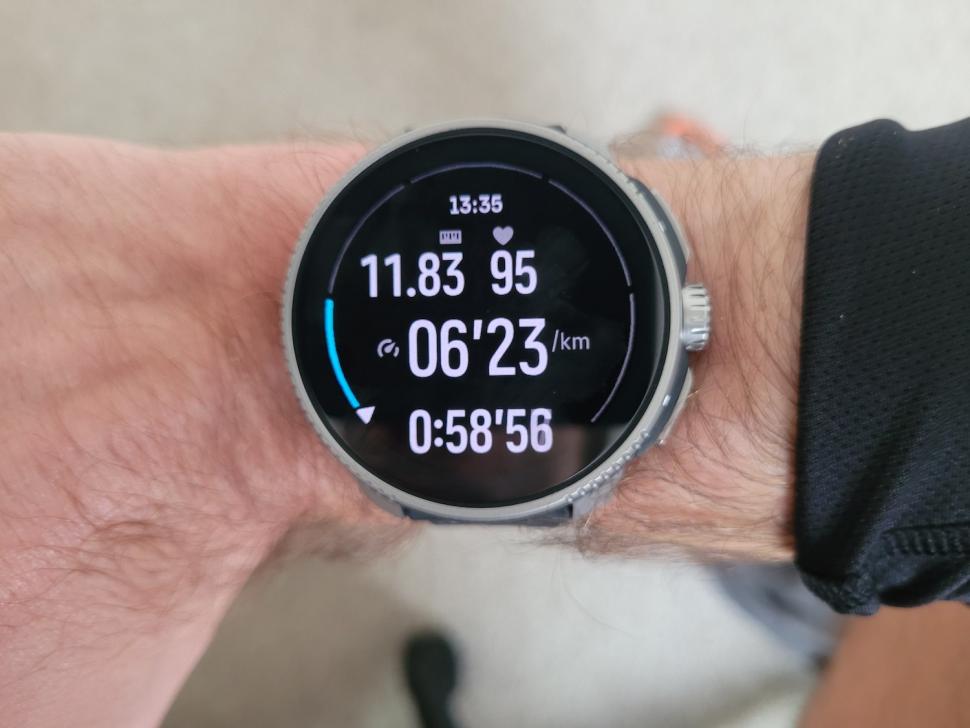

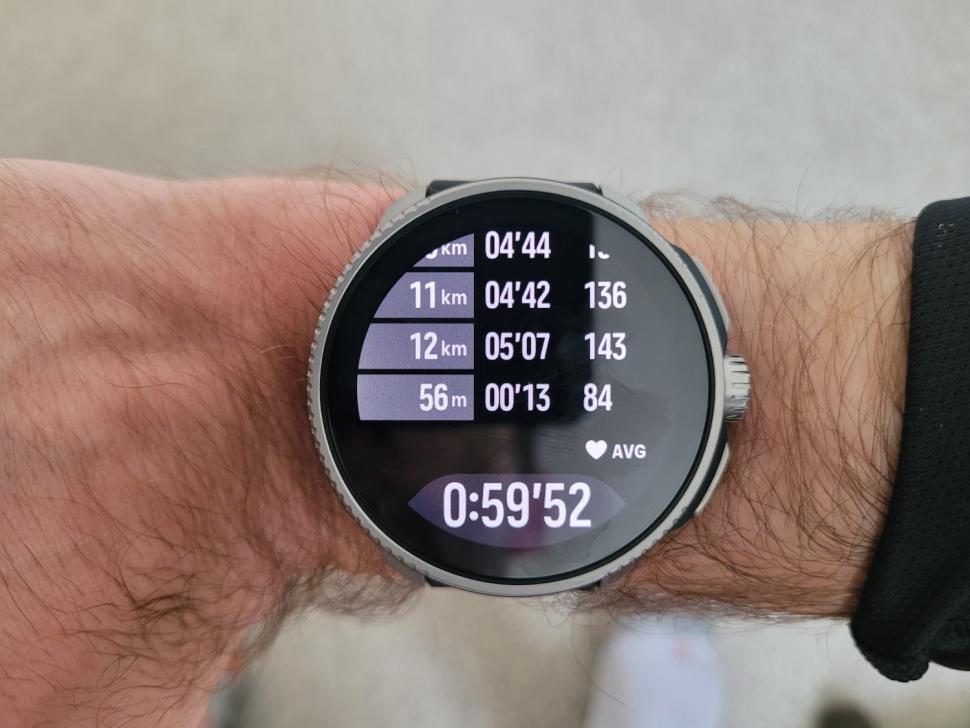








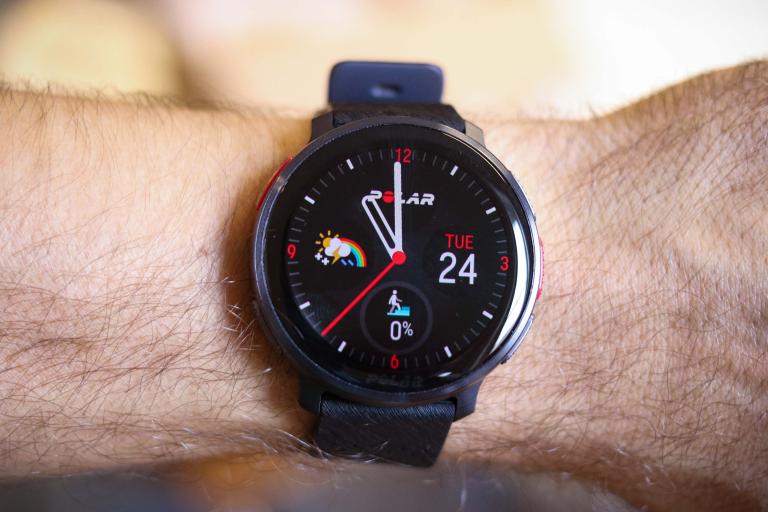

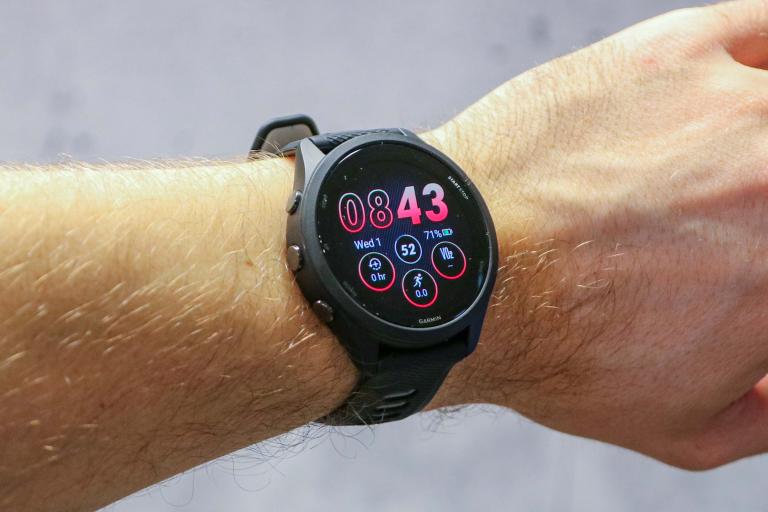

Add new comment
2 comments
The suspect HR is really a comment on wrist based optical HR. The Polar Verity Sense that you can wear around the upper arm is pretty good and highly consistent with a Polar H10 chest strap. It's also so un-noticeable that you forget it's there. If the HR is wrong, then so is almost every other health and fitness metric put out by the gadget and app. The Polar Vantage V3 is as bad as the Suunto- see The Quantified Scientist on YouTube. My impression is that the Garmins are generally better, but I have so far stayed away from any sports watch.
I think this is a common weakness of optical HRM, where they report a sub-division of the HR. I've had the same from my Garmin Instinct 2 - suddenly the reading jumps up when it decides it was reading the wrong vibe. I bought a Polar H10 just to be sure it wasn't my ticker.